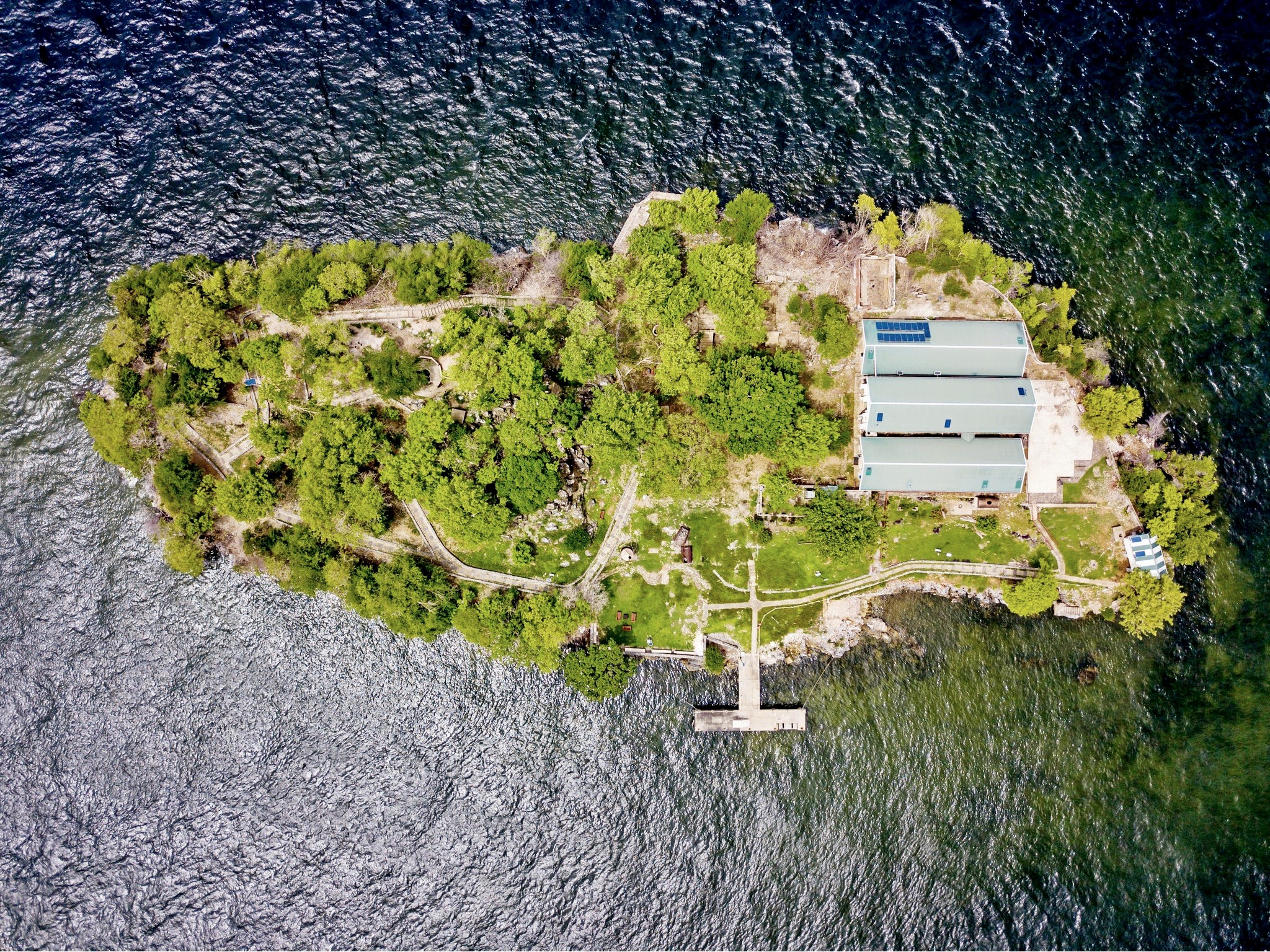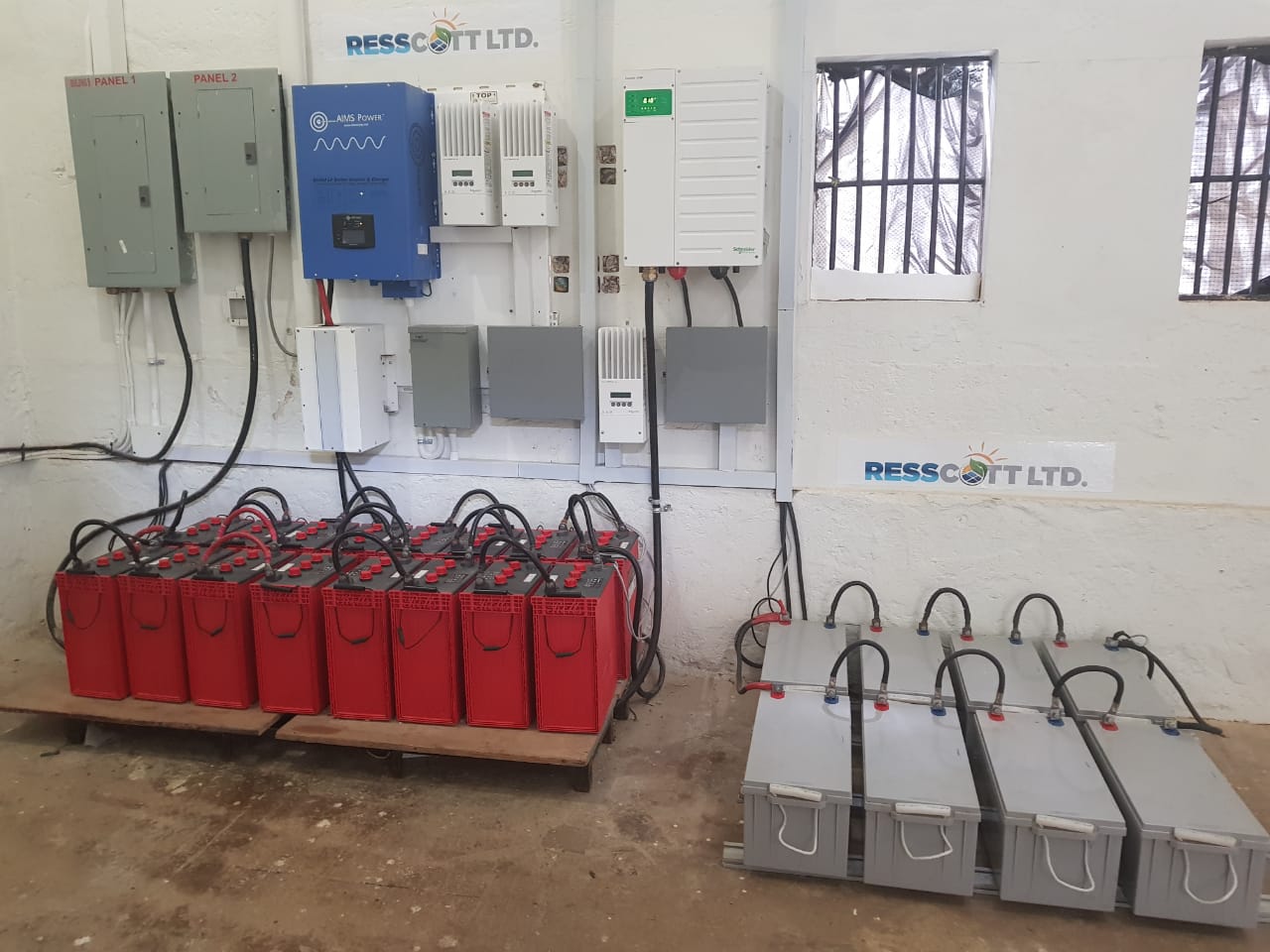
Source: Kumi De Souza
Nelson Island is one of a cluster of six small islands called the “Five Islands” located in the Gulf of Paria approximately 2.5 kilometres due south of Chaguaramas and due east of the prison island of Carrera. They are, in descending order of size: Caledonia, Nelson, Lenagan, Rock, Pelican and Craig. Craig is joined to Caledonia by a human-made stone causeway. These islands are the remnants of an ancient limestone deposit which extends from the hills of Laventille to Patos Island in the west. The Five Islands are covered with centuries-old intact structures, the ruins of houses, the remains of medical facilities, defunct military equipment, and other structural objects and artefacts. These are the vestiges of concentrated and layered human activity from Trinidad’s past. Therefore, these islands are inextricably linked through geology, geography and history.

Source: Richard Ramirez
Nelson Island has had numerous functions within the history of Trinidad. Before the 15th century trans-Atlantic contact period, the island was supposedly used as a trading post by the First People groups inhabiting Trinidad and the South American mainland. In the Spanish colonial period, the island was used as a way station between Trinidad and other Spanish possessions on the South American coast. Subsequently, the British initially used Nelson as a quarantine station for vessels hailing from ports under the suspicion of infection. Later, the Islands was used as a convalescent and repatriation station for newly arrived and ex-indentured Indian Immigrants. In World War Two, the Five Islands formed a part of the Chaguaramas base and served as a naval station for the United States Navy. The island also hosted an internment camp for enemy alien internees from Europe and a detention centre for labour leader Tubal Uriah “Buzz” Butler who was held there for the duration of the war. The island was again used as a detention centre 1970 to house 50 leaders of the Black Power Revolution.
Presently, Nelson Island functions as a heritage site under the control of the National Trust of Trinidad and Tobago which became a listed Property of Interest in 2019. The islands’ isolation from the mainland has always been a logistical challenge which prompted the National Trust to make the island sustainable, therefore creating a new chapter to its story to demonstrate its resilient independence. In 2019, the Island was powered by a 100kVA Diesel Generator which then led to the decision by the Council of the Trust, to upgrade our power supply capabilities to incorporate Renewable Energy Technology. Following this decision, the Ministry of Planning & Development provided the funding through the Public Sector Investment Programme, (PSIP). The National Trust then entered into a strategic partnership agreement with the Ministry of Works & Transport, whereby technical assistance, expertise as well as skilled labour, was provided by the Ministry on a project by project basis. A 17kW Solar PV System was then installed on the island, making it the largest Off-Grid Solar PV System in T&T to date. This Solar system, provides the electrical needs of the island inclusive of lighting, security systems, data communications, appliances and power outlets. After years of depending on a boat to periodically bring freshwater to the island, a 1,000 gallon Desalination Unit was installed, driven by solar power, to produce all of the potable water required for use on the island.

Source: Kumi De Souza
This initiative is also in keeping with T&T’s commitments to the global community under the Paris Agreement as laid down in our Nationally Determined Contribution (NDC), as well as in the achievement of our national policy target to increase the total amount of electricity generated from renewable energy sources by 2021. This eco-development also aids in the fulfilment of Theme V of the National Development Strategy, Vision 2030.
In addition, this initiative supports the country’s achievement of three Sustainable Development Goals, (SDGs); SDG 7: Affordable and Clean Energy, SDG 11: Sustainable Cities and Communities and SDG 13: Climate Action. Making Nelson Island a Sustainable Eco-Development, is also in keeping with the Trust’s mandate in the Education of our National Heritage. The space is now a greater source of heritage pride, symbolising how Trinidad and Tobago (T&T), can celebrate and harmonise its colourful sometimes turbulent past with its unlimited potential and an environmentally sustainable future. As such, the National Trust currently operates School Tours along with annual events for Carnival, during the Christmas season and other periods of national significance.
The National Trust continues to advocate for the preservation of our National Heritage Assets through the Listing of these properties and continued research on new properties of interest.

